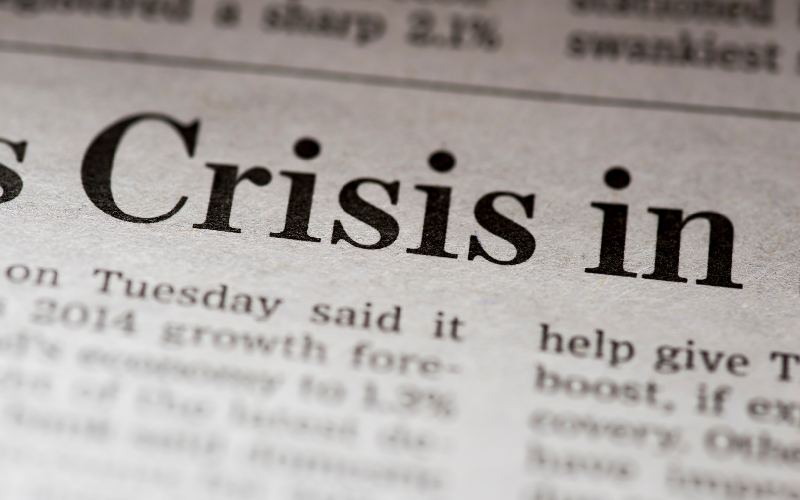
Should We Still Talk about Crisis?
News
Aug 10, 2022
A Reflection by Public Health Leadership Coalition’s Member – Prof. Bettina Borisch
The word “crisis” is omnipresent in today’s discourse. There is the COVID-19 crisis, the climate crisis, the Ukraine war crisis, the hunger crisis, and many more. The feeling of an extraordinarily uncertain and threatening future permeates public sentiment. Some use the word “polycrisea” to describe this state of affairs.
The word “crisis”, derived from ancient Greek, has had several meanings over the centuries, including decision, separation, test, and result. Current definitions hold that a crisis represents a “time of great disagreement, confusion or suffering; an extremely difficult or dangerous point in a situation.” Similarly, the Oxford Dictionary describes it as “a time of intense difficulty or danger.”
Today, it is common to view crises as discrete events with defined beginnings and endings. Such views come with pitfalls.
First, crises frequently occur simultaneously. This is not new. In 1961, wars raged in Angola, Eritrea, and Vietnam to name a few, the Berlin wall was under construction, the USSR was testing nuclear weapons, Yuri Gagarin became the first man in space, and Fidel Castro declared Cuba a socialist state. The cold war was at its hottest phase, with a third world war within easy reach of imagination. 1961 also marked the year John F Kennedy was sworn in as President of the United States.
Second, many crises have only an apparent beginning point. If seriously researched, the root causes and events leading to a given “crisis” usually long predate it. The same logic applies to the apparent end of a crisis. The political, societal, cultural, and other sequelae of a crisis are often broader than our understanding of it, and only years or decades hence become visible to historians.
Third, one crisis may coincide with another, amplifying the effects of both and creating new, complex, and deleterious dynamics. The nexus of climate change and COVID exemplifies such syndemic crises.
Speed constitutes a relatively recent complicating factor in crises. The pace with which crises become global is faster than, for example, in mediaeval times. The Black Death took decades to eradicate over 50% of the European population. The consequences for society were far-reaching, and not all, such as the abolition of serfdom, were understood to have roots in this health tragedy. Moreover, it took years for the bacterium Yersinia pestis to travel along the trade routes from Asia to Europe. The very first DNA plasmids of Yersinia pestis were detected in the teeth of seven Bronze Age individuals in Siberia, Estonia, Russia, Poland and Sweden as far back as 6000 years ago. These were all from hunter-gatherer cultures. Trade networks were proposed as the likely avenue of spread rather than migrations of populations, yet genetic changes that made the disease highly virulent did not occur until about 4000 years ago. Today, modern transportation and the extensive global trading system enable genetic changes to occur in months.
The speed of information in today’s world exerts both positive and negative effects on crises. The World Health Organization (WHO) has called COVID the first pandemic to be accompanied by an “infodemic.” Information – both true and false – spreads over the internet at light speed, instantly fueling our reactions to real or perceived dangers. The wish for predictability, security, and stability is widespread and human. It is also desirable from a political standpoint, as stable societies are more productive and more peaceful.
Nevertheless, situations that qualify as crises per today’s definition (a time of difficulty and danger) are present-day constant and will increase in the years to come. “Handling” crises one after the other is not an effective long-term strategy. Nor is the oft’ stated goal of getting “back to normal.” Moving back to an earlier “normal” time is simply not possible, and “normal” – when we attempt to define it – turns out to be a constantly changing value. The belief that we can deal with and resolve crises one by one is an illusion.
So how should we deal with a crisis? What is the alternative to a “back to normal” strategy?
Flexibility and adaptability must be central to effective crisis response – this holds true at the individual and societal levels. For the individual, this is a permanent learning process. For the international community, the challenge is far more complex.
The freedom to think different in ways, and the creativity of each and everyone, also stand out as essential to any response. These days the WHO International Negotiating Board is working towards the establishment of a pandemic treaty or equivalent instrument to enable an effective international response to future pandemics. The WHO’s 194 member states, plus myriad stakeholders, have been working on this task since the beginning of 2022. Any future treaty or global instrument must have inbuilt flexibility, as well as a mechanism that allows for the adaptation of its regulations as times and circumstances evolve. Only flexibility and the ability to adapt can guarantee stability.
The ancient Greek meaning of crisis should be our guiding principle – decisions have to be taken; analyses must lead to action and results. We must abandon the current modus operandi of approaching crises as discrete events with discrete solutions, and instead embrace diversity of thought, flexibility, and adaptability as leading principles in responding to complex and interlinked (in both time and space) global challenges.
